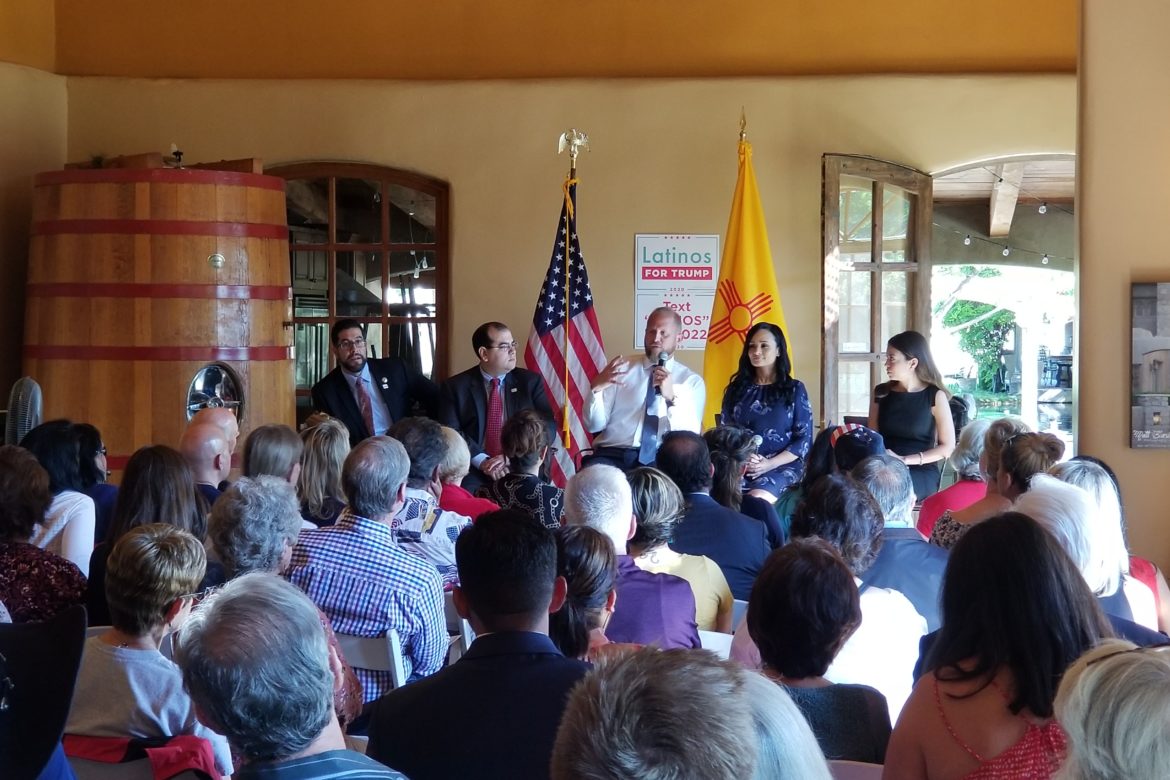The Trump swing through New Mexico has people wondering if New Mexico is really in play for next year’s election cycle. Despite the fact conventional wisdom says that is unlikely, that is not the end of the story.
New Mexico’s five electoral votes have gone to a Republican presidential candidate only once since 1992 (George W. Bush in ‘04) with Al Gore barely edging out a victory in New Mexico four years earlier by less than one percent. Three years ago in the last presidential election Hilary Clinton won the state by about 8 points, and following last year’s blue wave the state has been trending even bluer than it has been in recent history. Given these recent Democratic victories up and down the ballot, it is easy to understand the skepticism surrounding Trump’s 2020 New Mexico efforts.
Aside from the state’s Democratic performance, one of the larger questions regarding the Trump campaign’s 2020 strategy is its apparent focus on turning out voters in 2020 who did not vote in 2016, a major challenge for any political campaign since the most accurate predictor is and has always been a voter’s voting history. But this strategy of turning out low propensity voters is clearly born out of political necessity: Trump and fellow Republicans are worried – and rightly so – that 2020 will be a repeat of the 2018 election cycle which saw a dramatic collapse of suburban Republican support.
Thus the Trump campaign stop in New Mexico is the beginning of essentially a hedge play against an electoral map that almost certainly will be different from the 2016 version; at the minimum it is likely Trump will lose a state or two in the Midwest (such as Wisconsin), so the campaign is hoping that with its flush resources it can partially make up that deficit by making New Mexico competitive through early investment, as well as banking on the fact that the state is a relatively cheap market to operate in.
The Trump campaign stop in New Mexico is the beginning of essentially a hedge play against an electoral map that almost certainly will be different from the 2016 version.
There are signs, some overt and some more obscure, that have given the Trump campaign reasons to support the New Mexico strategy. It has been reported that the Trump campaign first became aware of the considerable support Trump has in New Mexico after noticing that a large crowd of New Mexicans attended an El Paso rally back in February.
A brief overview of New Mexico would make the Trump campaign fully aware that there was very little activity from either the state GOP, RNC, or the Trump campaign in the last two election cycles in ‘16 and ‘18. Although his net approval rating has dropped from +17 when he was first elected to -13 as recently as July, the Trump campaign is making a relatively cheap wager that by building up GOTV infrastructure in New Mexico – something not seen since Susana Martinez was on the ballot – the campaign might be able to turnout enough of those New Mexican supporters it first identified in El Paso to win the state and help Trump reach the 270 electoral votes he needs to win.
Another factor encouraging the Trump reelection effort is, somewhat counterintuitively, New Mexico’s demographics. According to census data, the state’s percentage of immigrants is actually lower than other border states, including Texas and Arizona. Even though New Mexico Democratic leaders claim Trump’s support of a citizenship census question is racist, a recent poll by Harvard’s Center for American Political Studies found that a majority of Hispanics actually support adding the citizenship question. Considering a substantial percentage of the state’s Hispanic population has lived in New Mexico for generations, it is entirely plausible such support is even higher in New Mexico.
Contrary to what many Democratic leaders and activists would have you believe, Democrats in New Mexico (many of whom are Hispanic) tend to be more conservative than your stereotypical Democrat. It is why earlier this year the Democrat-controlled Senate voted to maintain a state law that criminalized abortion. And it helps explain why out of all the attendees of Trump’s Rio Rancho rally, 40 percent were Hispanic and almost a third were Democrats, as revealed in this tweet from Trump campaign manager Brad Parscale:
.@realDonaldTrump rally in NM was a data gold mine.
🔺45K people registered for tickets (94% from within NM)
🔺78% of registrants matched to voter file
🔺Over 20% voted in 1 or 0 of last 4 elections (9.3%=0, 11.5%=1)
🔺52% male, 48 % female
🔺40% Latino
🔺31% Democrat
— Brad Parscale (@parscale) September 17, 2019
Regardless of Trump’s success in New Mexico come November next year, one of the most important impacts the Trump campaign and RNC’s early New Mexico buildout will have is the potential to affect down ballot races in 2020. While many argue that New Mexico is no longer a battleground state, the recent Democratic success is due in no small part to a local and state GOP that failed to maintain the GOTV and voter engagement apparatus that propelled President Bush to victory in ‘04 and Governor Martinez to victory in ‘10 and ‘14.
If the Trump campaign, the RNC, and the NM GOP are successful in rebuilding critical voter turnout infrastructure not seen recently in New Mexico, Republicans on the ballot in 2020 could finally be positioned to effectively push back a Democratic Party that has seen little organized opposition in New Mexico elections. With the upcoming New Mexico redistricting process in the hands of the 2020 Legislature, the anticipated buildup of Republican GOTV infrastructure could not come at a more critical time for the NM GOP.

